Another one of the churches that I visited on 17th July 2017. St. Clydawg lies in the parish of Clodock and Longtown in Herefordshire, not far from Abbey Dore (still in the Golden Valley). It is an early church; a church has stood here to St. Clydawg from around 500 A.D. The unusual name is for one Clydawg, the son of Cledwyn, King of Ewias, who was murdered; when he was buried, the oxen pulling the cart refused to cross the river Monnow, so he was buried near the river bank. He was regarded as a martyr and people began to worship at his tomb; the church was built and a settlement grew up around it, called Llan (enclosure) Y Merthyr Clydawg, or Clodock. The church was restored in the seventeenth century, and today has a lot of seventeenth-century surviving material, hence my visit. As with my previous Abbey Dore blog post, the rest of this is primarily photographs with the occasional explanatory text.
If you’d like to visit St Clydawg, then the details can be found here.
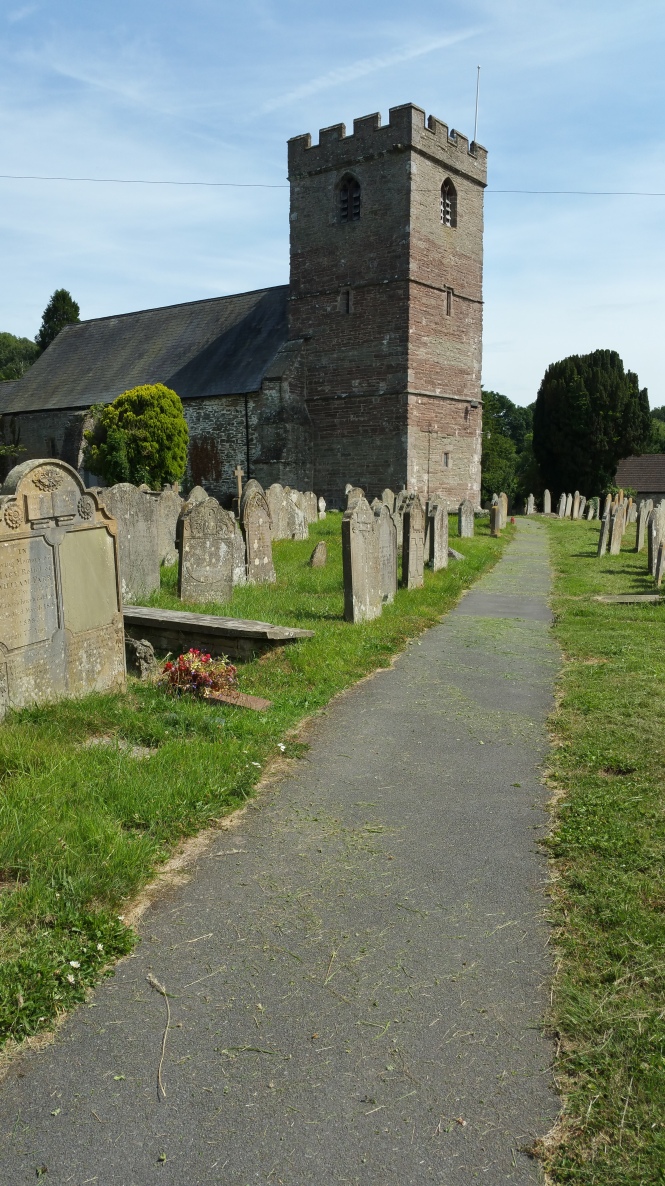
The path leading up to St Clydawg, or St Clydog, from the road and Lychgate (which is a modern reproduction of the original).
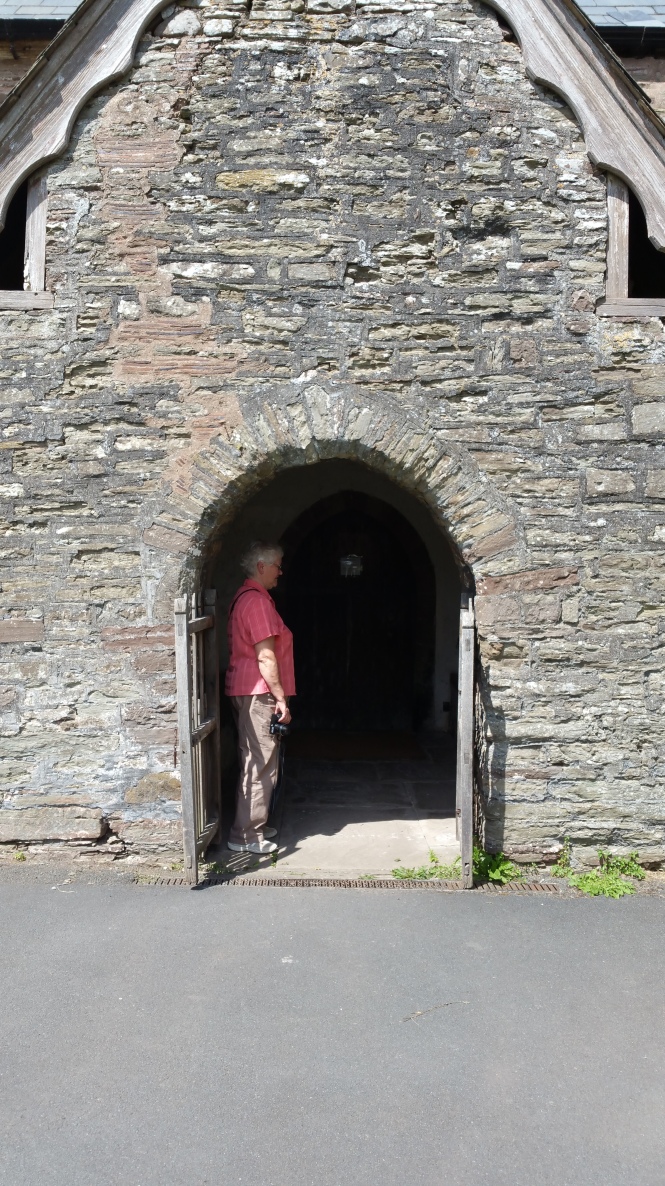
The entrance to St Clydawg’s, with a volunteer for scale…. she’s not a tall woman, around 5ft 5, which gives some indication as to how short this doorway is.
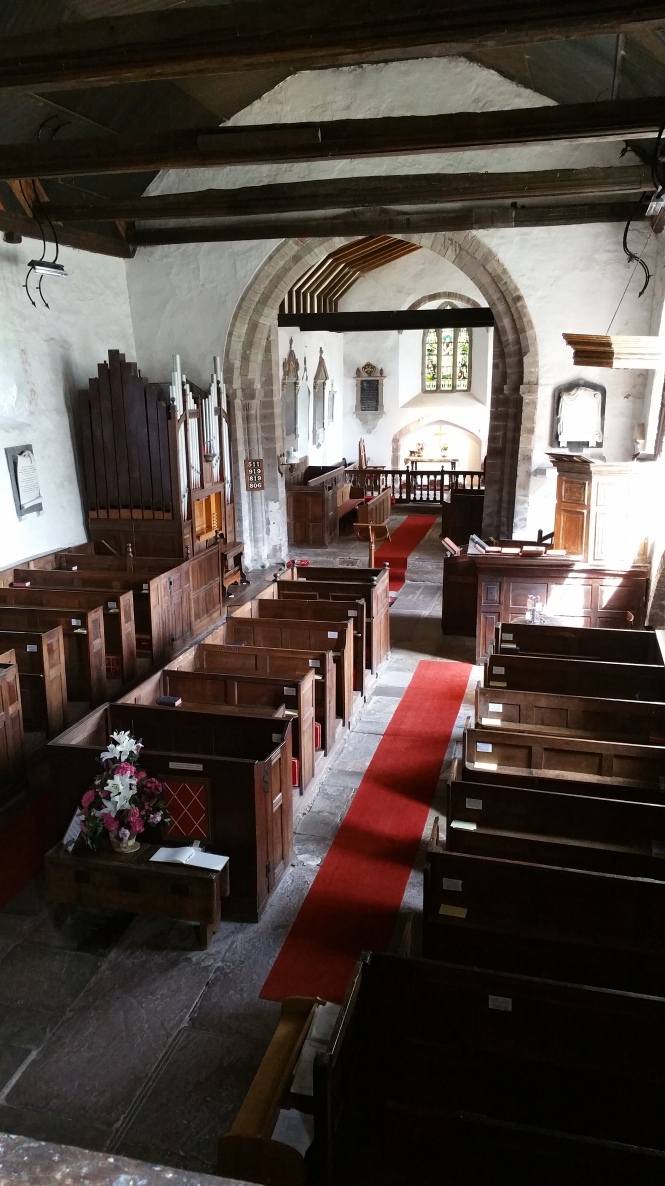
The interior of the church, from the western gallery. This was built around 1700-15 to house the orchestra and choir. Much of the internal layout of the church was changed during the 1916-19 restoration, so what is here today is not necessarily how it was during the seventeenth century.
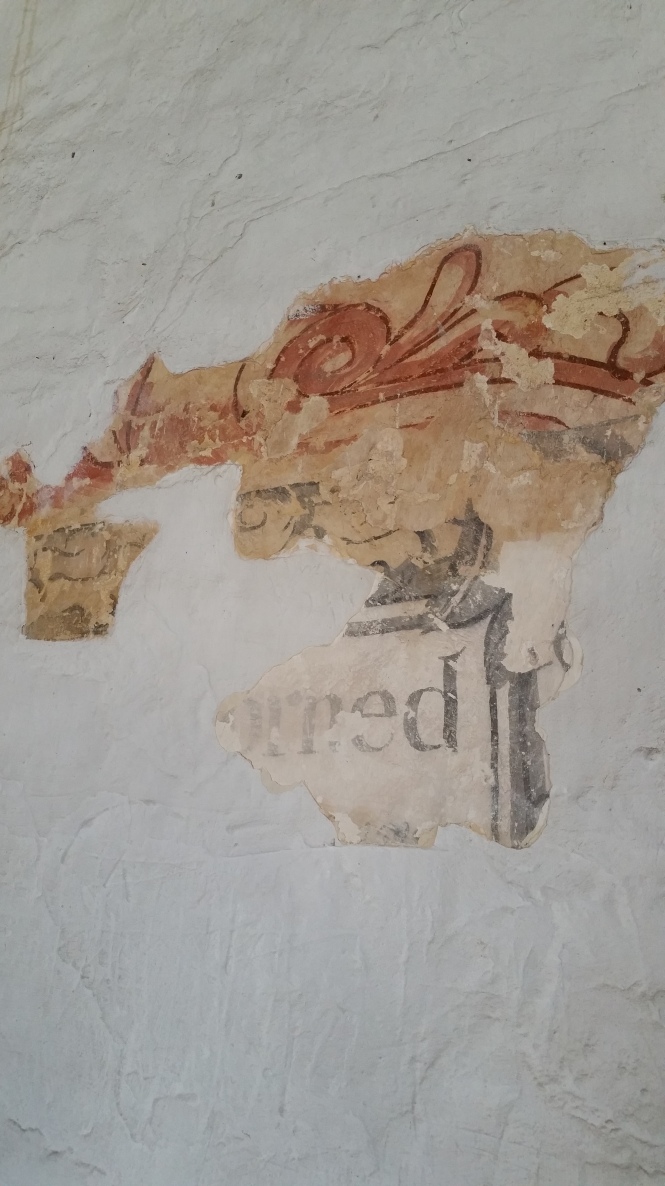
The church has a number of fragments of wall paintings, including these, as well as a full image of the virgin Mary from the fifteenth century which was restored in 1997.
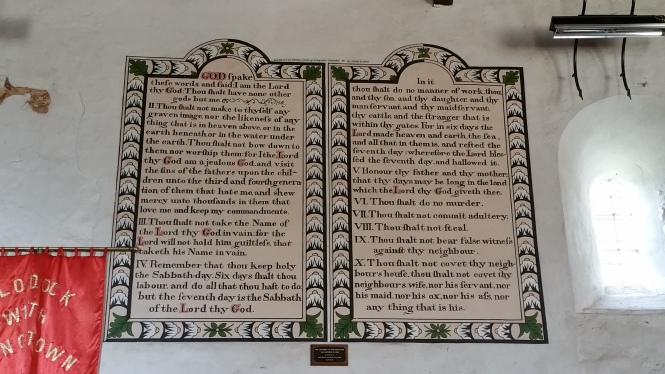
This is a decalogue – the ten commandments – which dates from the eighteenth century. It was repainted in 1799 and again in 1989, but it gives some idea of how vivid the now-faded wall paintings would once have been.
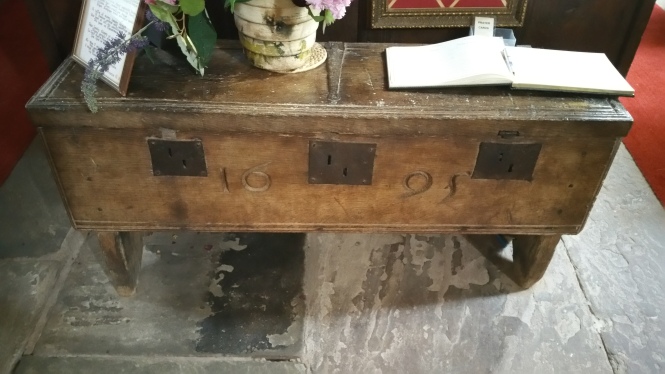
The church has three parish chests. This one, as can be seen, dates to 1691 and was probably bought to replace the previous chest (see below) as part of the seventeenth century restoration to house new communion plate or the parish register. The keys to each lock would have been given to three different people: vicar and the two churchwardens.
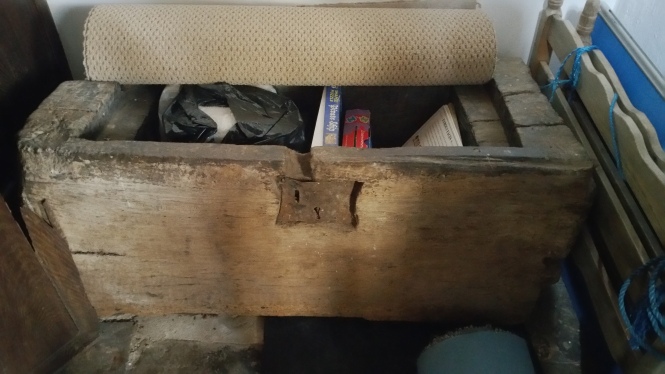
This is the second of the church’s parish chests. This one dates to the thirteenth century, made of a single log hollowed out. The top is missing and the lock is broken; according to the guidebook, this may have been because the Scottish army burst it off when they pillaged the Golden Valley in 1645. It notes that the oldest piece of communion plate that the church has dates to 1732, further supporting the idea that the church suffered a theft at this time.
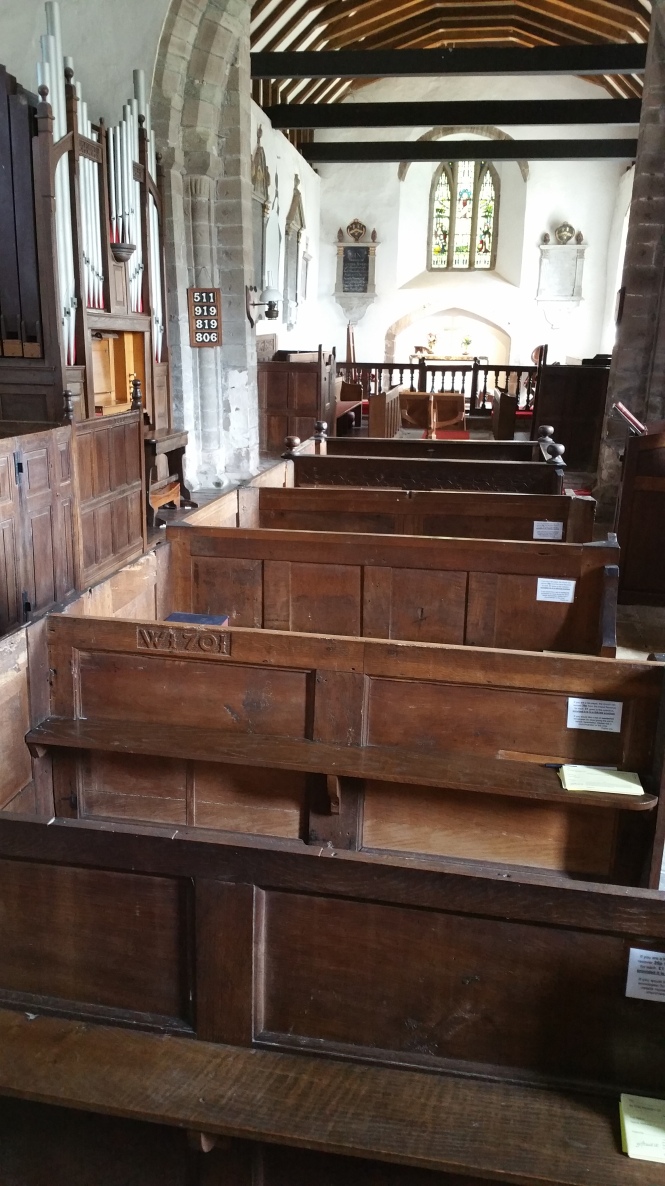
Pews: although the order of these was rearranged in 1915-19, most of these pews date to the seventeenth or eighteenth century. They were, apparently, all box pews; the doors were removed to cover the organ. What can be seen are dates and initials on some of the doors or elsewhere in the pews. It shows that pew disputes may have been an issue in this church.
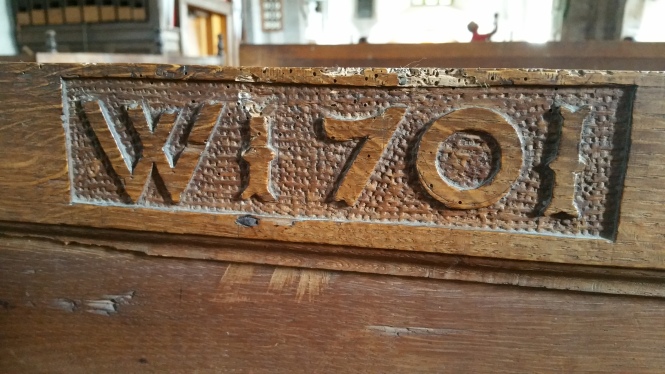
An initial and date carved on the inside of a pew
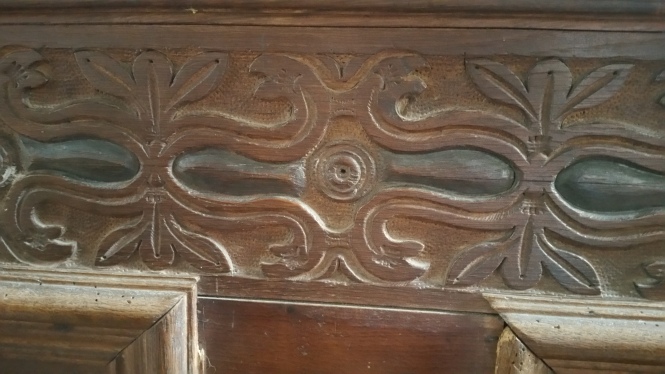
beautiful carving inside another box pew
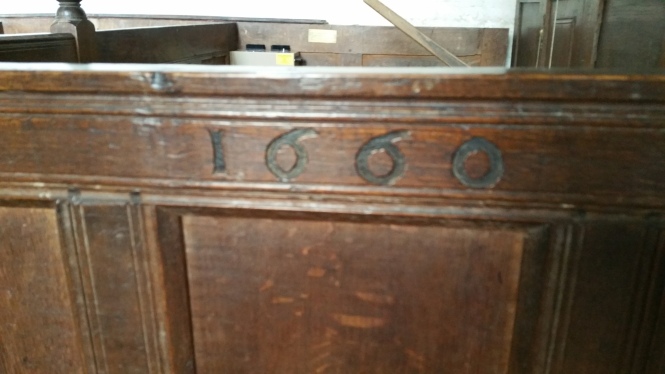
Another date, this time on the outside of the pew
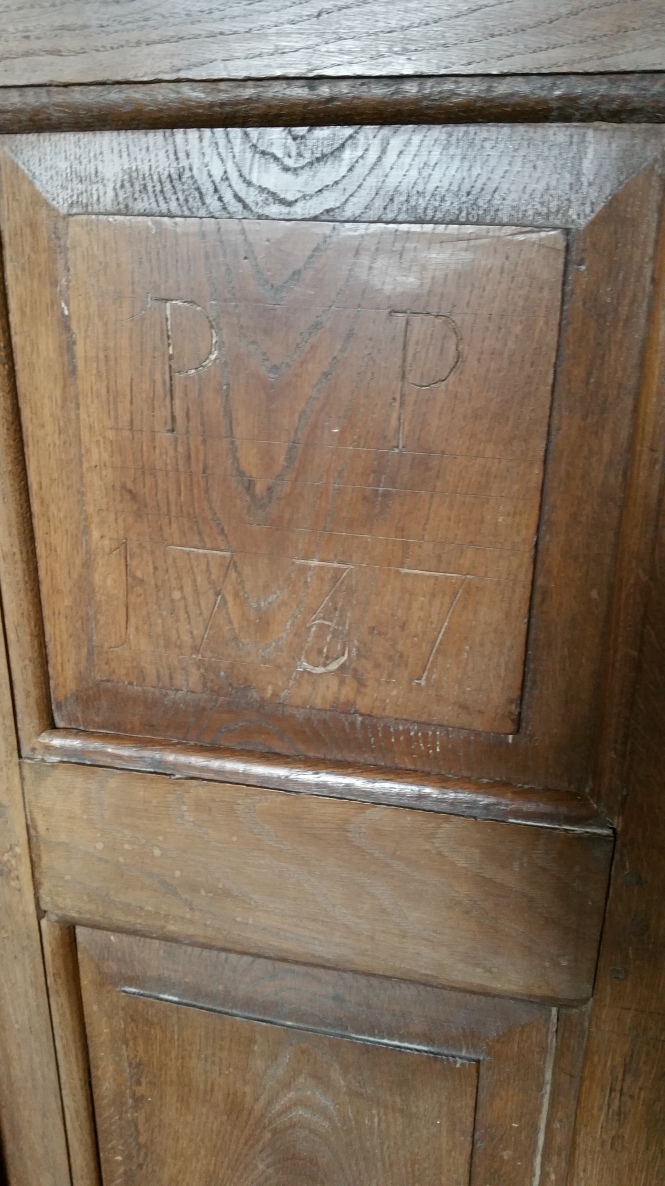
More initials and dates. This was a pew door, removed to cover the organ as part of the 1915-19 restoration.
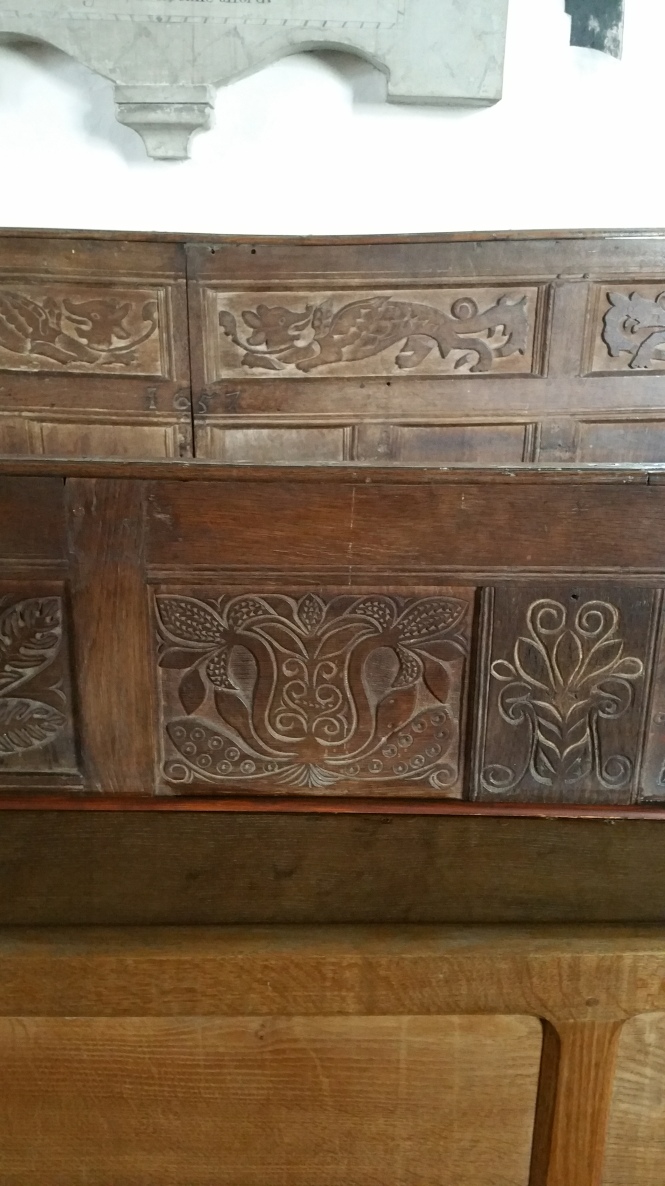
These are the stalls in the chancel – showing the backs of the benches. The rear two date from 1650-1700, the front one, much paler in colour, is modern.
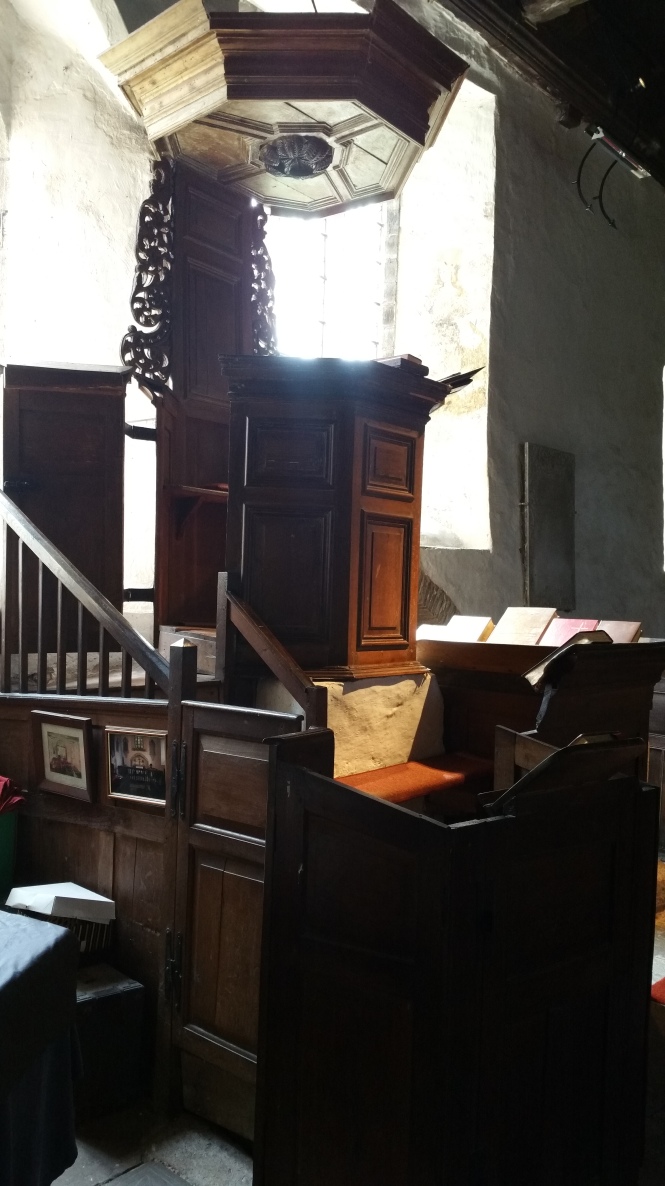
This is the pulpit. One of the best surviving examples of a three decker pulpit with a sounding board, dating from 1650-1680. It is a little rickety – I climbed it very carefully! – but otherwise sound.

Inside the pulpit, I quickly discovered that standing on the floor, one could not see most of the pews, particularly at the front immediately below the pulpit. The use of the box next to the kneeler became very apparent and when I stood on that, visibility was much better.
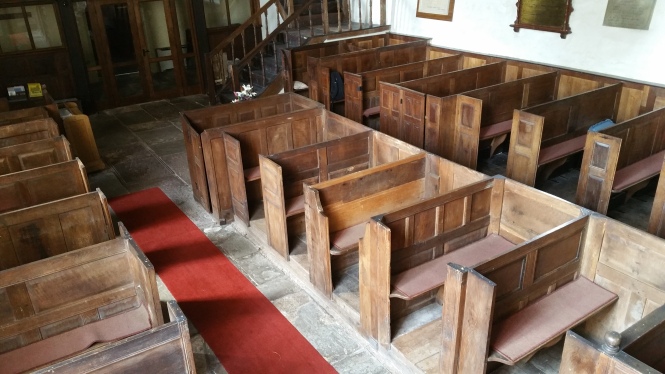
The view from the pulpit
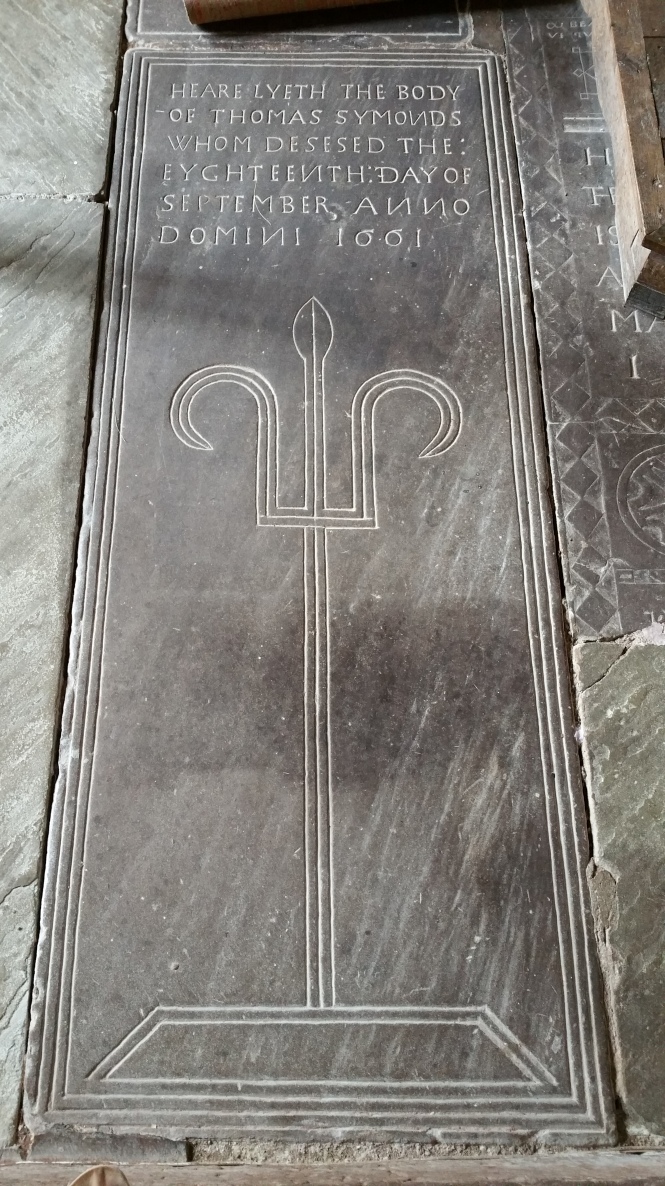
As at Abbey Dore, the church has a number of seventeenth century ledger stones.
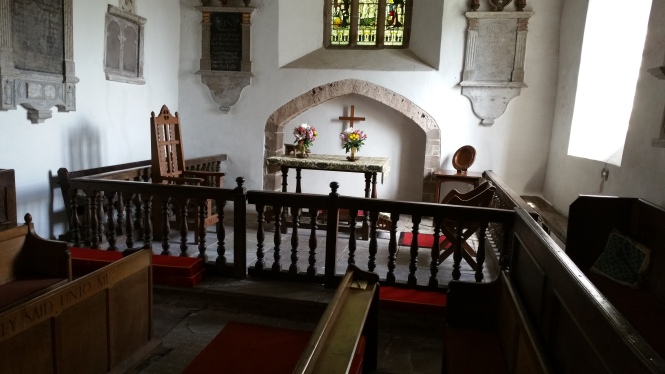
In the chancel, the communion table (not an altar) is surrounded on three sides by communion rails, all of which date from 1650.
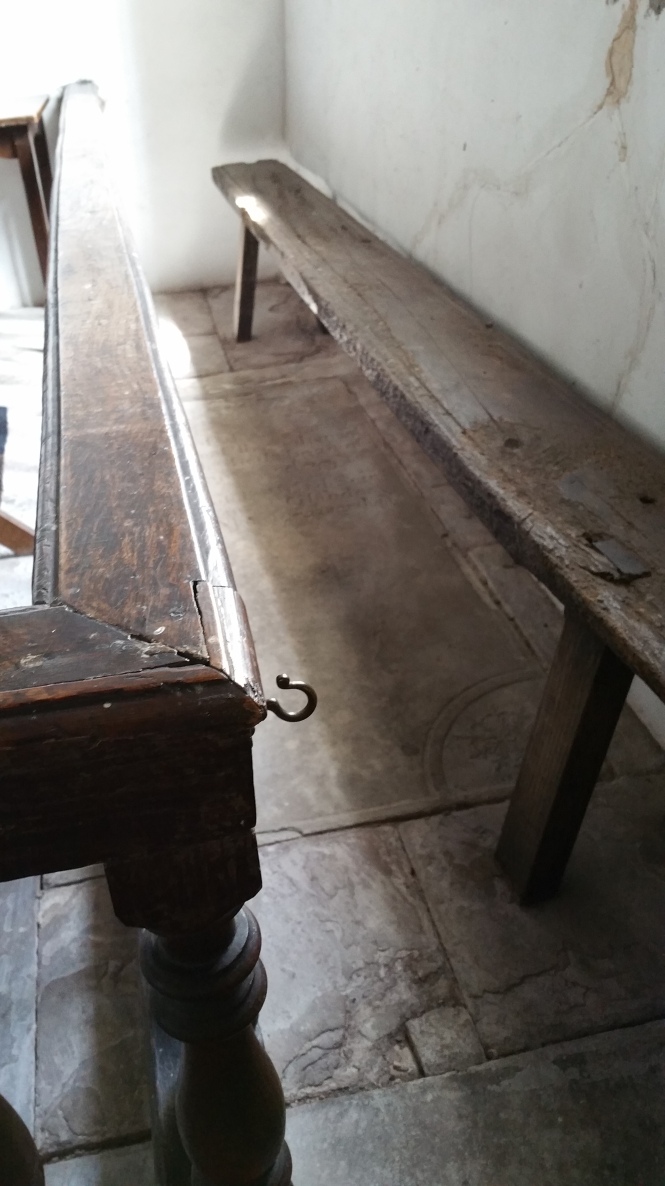
To the right of the communion rails is a housel bench – dating from the same period, it shows how people would have sat to receive communion. Interestingly, there isn’t a lot of room to kneel.
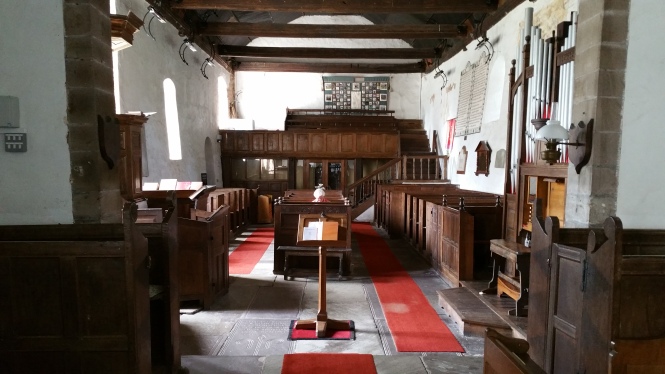
This shows the view from the middle of the chancel down the nave, and shows the western gallery quite clearly. the lectern immediately in front is twentieth century, as is the organ to the right.
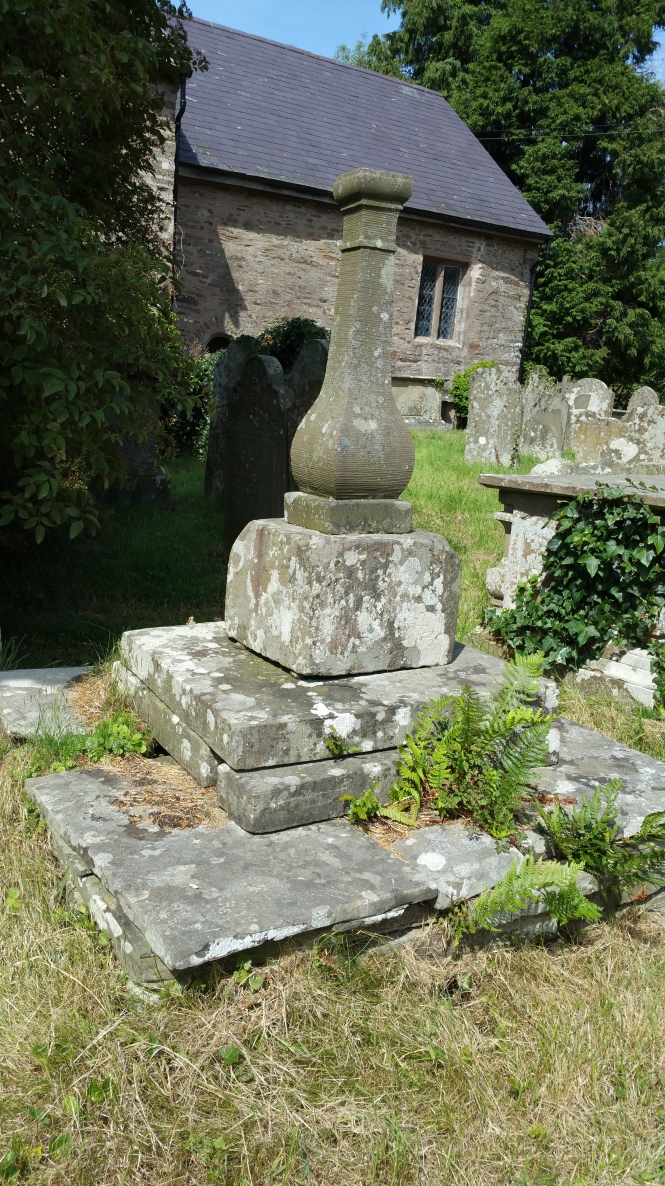
The base of the old churchyard cross which lies opposite the southern porch door – the top is now a baluster sundial dated 1819.
Textual information detail taken from either the church guidebook (by G. Moore, n.d.) or A. Brooks & N. Pevsner, The Buildings of England: Herefordshire (2012, Yale University Press, New Haven and London), pp.172-3.
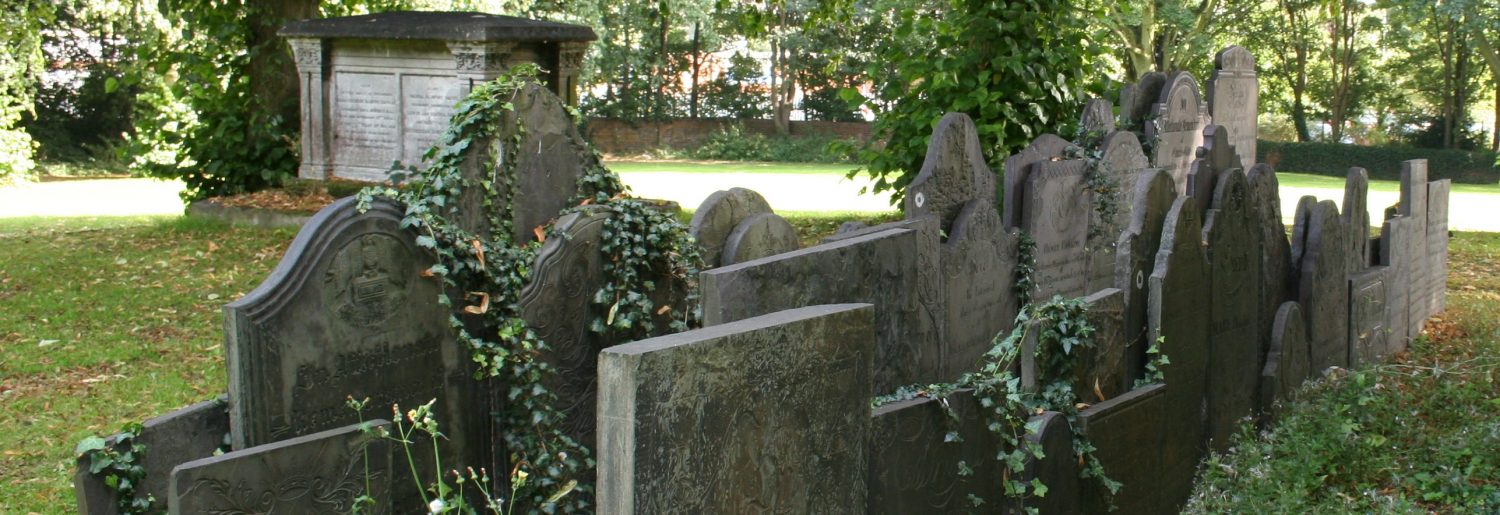
[…] in churches, as so many other pulpits were, to include sounding boards (there is a fab example at St. Clydawg, Clodock, for example). Perhaps the acoustics in the church were good enough that it was never felt to be […]
LikeLike